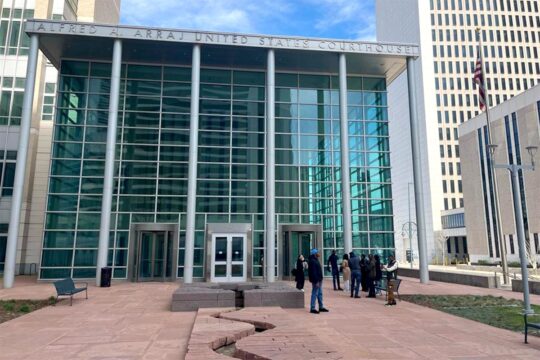Broadcasting and publishing images of prisoners of war may constitute a war crime, experts have warned, after the Ukrainian military paraded captured Russian soldiers before the media at the weekend.
Here are rules that institutions are bound by under the Third Geneva Convention.
- Name, rank and serial number -
According to the convention, "prisoners of war must at all times be protected, particularly against acts of violence or intimidation and against insults and public curiosity."
Seen in this light, the images broadcast of captured Russian soldiers raise concerns, including whether they could have been coerced into repenting for the Russian invasion and denouncing Vladimir Putin.
The International Committee of the Red Cross (ICRC), which is the guarantor of the Geneva Conventions, says prisoners of war are obliged to give only a bare minimum of information.
"The prisoner is only obligated to give their name, military ranking, date of birth and matriculation number, and there can be no coercion when asking for more information from the prisoner," Cordula Droege, who heads the ICRC's legal department, told AFP.
The ICRC also has the right to visit prisoners of war in detention -- a right that states, in theory, cannot oppose.
- Inhuman, degrading treatment? -
Images of Russian soldiers such as those whom AFP saw being paraded before the media on March 4, "raise some concerns in relation to the respect of their dignity," said Elizabeth Throssell, spokeswoman for the United Nations rights office OHCHR.
"Such treatment does appear to be humiliating and degrading," she told AFP.
"It could, depending on the circumstances, be a war crime," she warned, but "that would of course be for a court to establish."
Marco Sassoli, a professor of international law at the University of Geneva, agreed that "/images of prisoners of war where you see their face and you can recognise them is a violation of international humanitarian law."
However, he stressed that "the simple fact of showing a picture -- as long as it is not inhuman or degrading treatment -- is not a war crime."
Cases like Abu Ghraib, where images depicting torture and other abuse of Iraqis detained at the US-run military prison shocked the world in 2004, are a different matter, he said.
"When you have a detainee, like at Abu Ghraib, naked, on a leash, being threatened by dogs, that is a war crime."
At the same time, he highlighted that such images, broadcast or shared on social media, can be used later by prosecutors as evidence to help bring perpetrators to justice.
They can also provide leads to the fate of people who disappear in the heat of a conflict.
However, informing families about the situation of their loved-ones is no excuse for publishing such images, Sassoli said, stressing that the Geneva Conventions prescribe other forms of communication.
States must provide the names and other details about their prisoners to the ICRC, which in turn passes on information to the families.
- International conflict -
The experts emphasise that the international rules of war, and of how prisoners should be treated, apply to the situation in Ukraine, since it is an international armed conflict.
Soldiers have rights if they become prisoners of war in any international armed conflict, and they are not the only ones.
Members of organised armed groups, sometimes called resistance fighters or rebels, that have a command structure considered a party in the conflict, are also entitled to prisoner of war protections if they are captured, Droege said.
In cases where populations spontaneously rise up to oppose invaders without having time to organise a command structure, those captured are also considered prisoners of war, as long as they wear their weapons visibly and respect the rules of war, she added.


